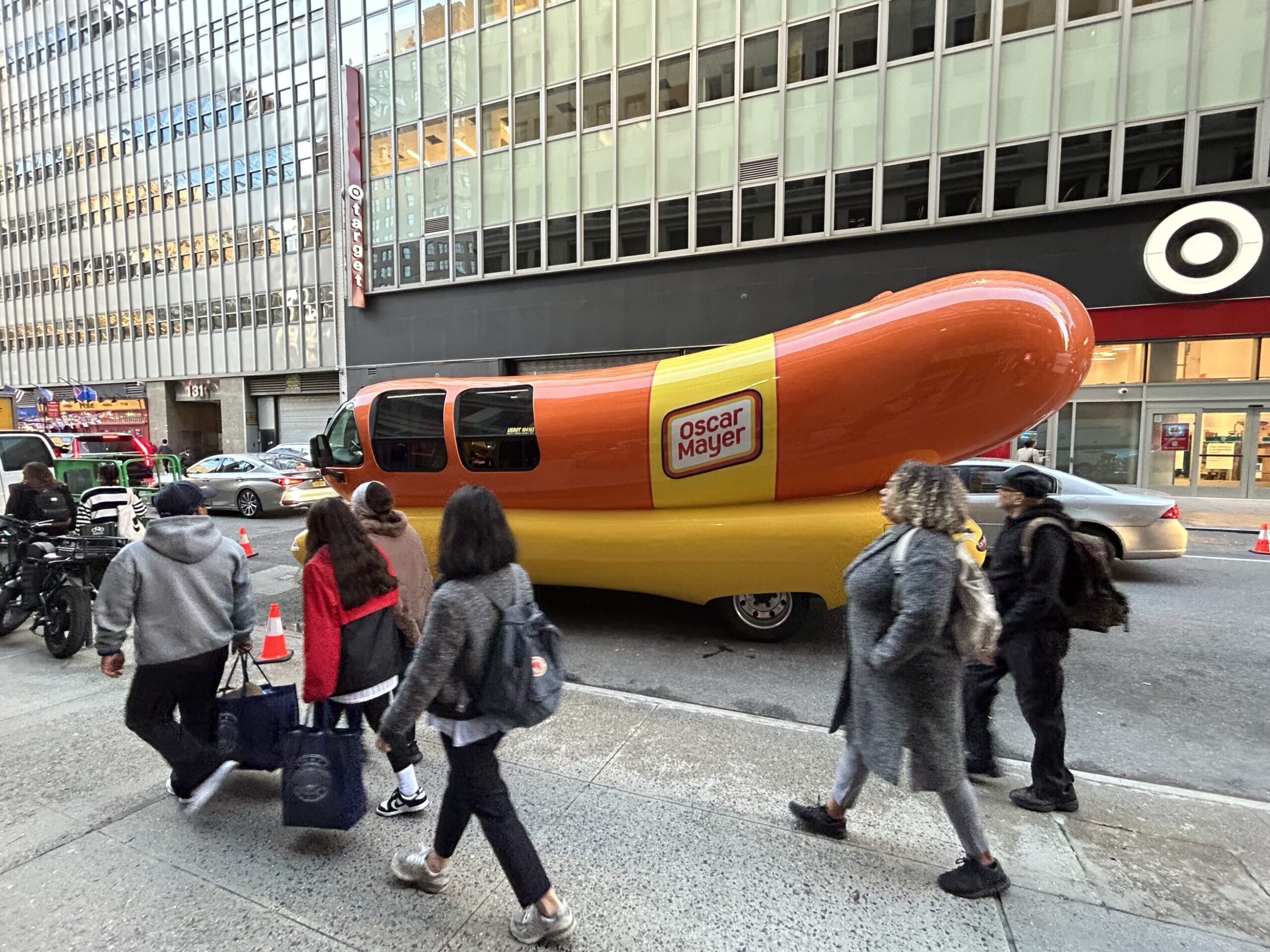Advertising Week 2023 was held in the former Manhattan Mall on 33rd Street in New York City, a fact noted as either ironic or wholly appropriate by several of the event’s speakers.
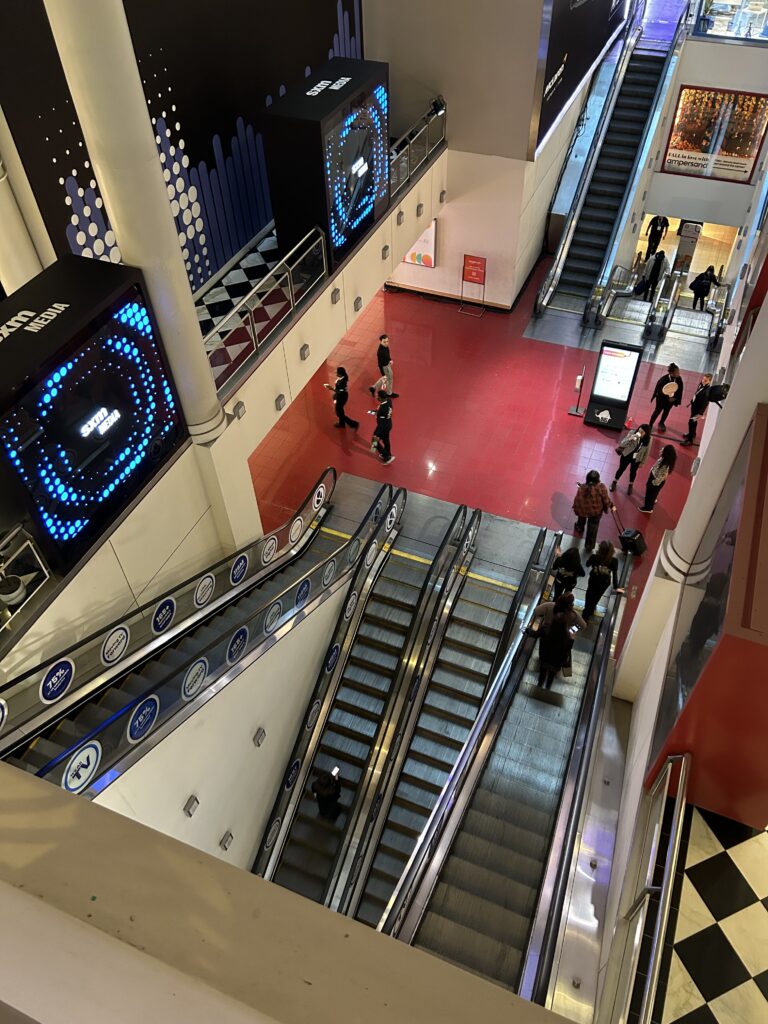
The irony came in the fact that executives from across the marketing, publishing, ad tech and entertainment communities were discussing the future of advertising in a venue that better reflects its past. But it seemed like a wholly appropriate location for a conference that devoted much of its agenda to the convergence of brand and commerce marketing.
It was also appropriate as a reminder that, while the methods of brand communication and product purchase continue evolving at a rapid pace, the fundamentals driving consumer and shopper marketing are more constant than some might think. Three examples:
- “Omnichannel shopping is not new [but] the channels and level of complexity have changed,” said Renee Doerre, Senior Director of Strategy & Enablement at Roundel, after her colleague, Roundel president Sarah Travis, reminisced about the importance of the Sears catalog in her youth.
- Retail media — brands advertising through retailers — isn’t a new concept either, although the focus has largely shifted from “inserts and endcaps” to digital engagement, said Megan Stevens, Director of Partner & Category Marketing for Best Buy Ads.
- Artificial intelligence “has been a huge part of our industry for a long, long time” although it became “the buzzword of all buzzwords in the past year and a half since ChatGPT became ubiquitous,” noted Ben Sylvan, GM of Retail Data Partnerships at The Trade Desk.
The conference offered many other examples of changes that are far more evolutionary than revolutionary. Sports and entertainment remain vital conduits for advertising, but the relationship is moving toward brands supporting the direct engagement efforts of celebrities rather than simply enlisting celebrities to endorse them. (The Advertising Week agenda was filled with enough known names to warrant coverage from People.)

And “television” is still a valuable ad medium, although the main arena has shifted heavily to CTV — which looks to be as critical to the immediate future of media advertising as retail media is for commerce marketing. (“I like to think of the two as peanut butter and chocolate,” Danielle DeLauro, EVP of the Video Advertising Bureau, said of CTV and retail media. “Both of them separately are spectacular, but together there’s nothing better.”)
Yet the fundamental core of marketing remains “being relevant to consumers in the moments that matter to them,” according to Jennifer Mennes VP, Global Head of Digital Marketing & Partnerships at Mondelez International.
And that’s why the evolution of advertising sounds so promising wherever it’s being discussed: because the actionable data provided by retail media, CTV and other tech-driven vehicles is now making it so much easier, efficient and effective for advertisers to keep doing what they’ve been trying to do all along.
The following are 7 takeaways from Advertising Week that reflect the main factors driving change for the ad industry.

1. Consumer need transcends budgets, channels or tactics
The need to focus marketing strategy entirely on consumers rather starting with internal budgets and structures, preferred engagement channels or enticing new activation tactics was discussed at length during the event.
“The shopper doesn’t care about your silos. They don’t care about where the budget comes from. The shopper wants a solution,” said Steve McGowan, Head of Shopper Activation & Strategic Partnerships at Mondelez International. “You have to collaborate and communicate way up front. What’s the objective, what’s the strategy, what is the brand message? If you align on that, you can pull everything else through.”

“We place too much emphasis on one channel versus another,” said Diana Haussling, SVP-GM of Consumer Experience & Growth at Colgate-Palmolive. “We have to get [the consumer’s] attention everywhere and create a seamless experience. It’s less about the tactic and more about the job to be done.”
Consumers are everywhere and, increasingly, in multiple places at once: 75% of Target guests use the retailer’s app or visit Target.com while shopping in a physical store, noted Ami Lathia, Director of Off-Platform Ad Products for Roundel.
The key ingredient to adopting this focus is partnership across functions, which “allows each of us to bring our unique capabilities in the service of a single unified goal — to improve the shopping experience for our consumers,” said Karthik Yemmaneur, Head of Product, Ad-Tech and Commercial Capabilities for PepsiCo Ecommerce.
Based on speaker consensus, the industry is moving in this direction. Sales and marketing teams are aligning on common goals, and retail media spending is more often being funded across brand, shopper and ecommerce budgets.
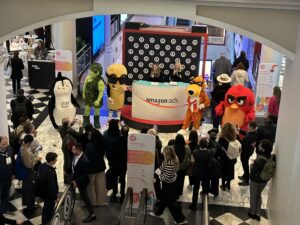
Best Buy restructured internally so that brand partners would have a single point of contact across category marketing and retail media, explained Stevens. “Don’t get too bogged down in where the budget silos are. I’ve seen too many brands make bad decisions as a result,” she said. “Think about the addressable audience you’re trying to reach and start there.”
Success starts with developing “a good insight and a good idea that can travel across touch points … and come to life in a meaningful way” in each of them,” said Randy Limes, Group Director-U.S. for Omnichannel Marketing at Mars Wrigley.
2. Consumer engagement must be unique and relevant
Consumers are often overwhelmed by the content options they encounter in their lives, which intensifies the need for marketing to be unique and relevant —and the latter encompassing place and time in addition to personal relevance.
“It’s really important for brands to be able to understand how they’re reaching me or my family as consumers instead of devices,” said Samantha Jacobson, Chief Strategy Officer at The Trade Desk. “[We need to recognize] where consumers are spending their time and make it as easy as possible for brands to buy or deliver their message there.”
Brands and retailers now need to look for “the intersection of consumer need and your brand. Don’t start with what you’re trying to sell but with the experience you want to deliver,” said Mary Beth George, VP-Customer Experience Marketing at Target (who shared the stage with her aforementioned retail media colleagues).
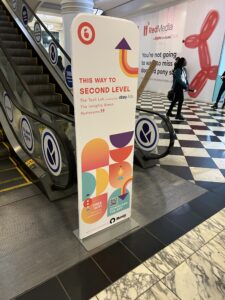 A new “Cultureverse” launched on the Spatial Web3 platform reflects Walmart’s efforts to identify “unexpected” methods of reaching consumers and “drive engagement that changes their perception” of the retailer, said Justin Breton, Director of Brand Experiences & Strategic Partnerships. The immersive Cultureverse environment celebrates the 50-year history of hip-hop music as part of Walmart’s broader “Black & Unlimited” initiative.
A new “Cultureverse” launched on the Spatial Web3 platform reflects Walmart’s efforts to identify “unexpected” methods of reaching consumers and “drive engagement that changes their perception” of the retailer, said Justin Breton, Director of Brand Experiences & Strategic Partnerships. The immersive Cultureverse environment celebrates the 50-year history of hip-hop music as part of Walmart’s broader “Black & Unlimited” initiative.
Walmart also relaunched its original “Walmart Land” experience on Roblox as “Walmart Discovered,” so far to better results. “We recognized our mistakes, we course-corrected, and we invited the community to be part of it,” said Breton. “This is the future of socialization, of commerce. We’re starting to go from brand loyalty to experience loyalty.”
After witnessing the strong impact social content can drive though the work of its internal production studio, Crayola partnered with an outside publisher to dramatically increase its video output, said Victoria Lozano, the 120-year-old brand’s CMO (below). Quality alone isn’t sufficient because you also need reach and scale to make sure that your content is seen, and partnerships can fill in capabilities gaps, she said. “We’re a bigger brand than we are a company.”
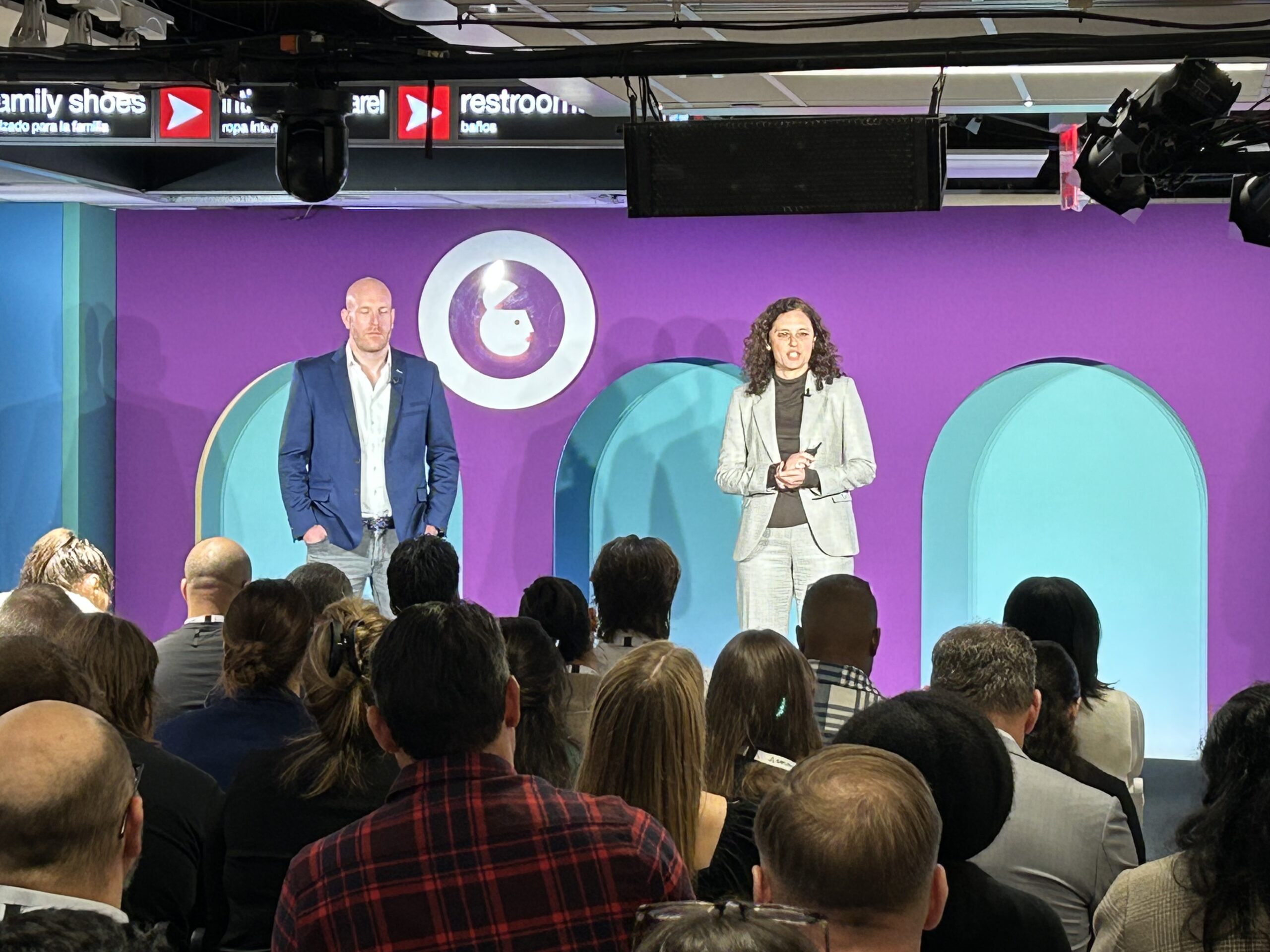
Consistency is just as important as quality on social media, said Patrik Wilkens, VP of Operations for TheSoul Publishing, Crayola’s content partner (above). That recommendation was echoed by Mennes at Mondelez: “Brand loyalty isn’t what it used to be. You have to keep reminding them.”
3. And that goes double for Gen Z
“Thinking by demographic is [still] real. But it’s more about life stage, and moment, and occasion,” said Allison Robl Stransky, Chief Marketing Officer at Samsung.
Nonetheless, a lot of Advertising Week’s discussion zeroed in on Gen Z. From decoding their motivations to understanding their streaming habits, attendees and speakers alike are working overtime to learn how to reach this audience as it starts to come of age disposable income-wise.
“Engage with the young people in your life,” offered internet personality and entrepreneur Aoki Lee Simmons. “This way, you can hear what the next generation of buyers are looking at and what they like. Treat them like a valued customer instead of infantilizing them in your marketing.”
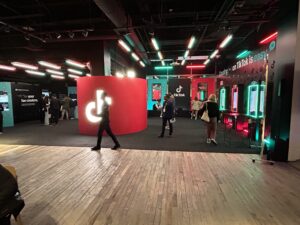
One place to find Gen Z is streaming platforms. Ann Piper, Spotify’s Head of North America Ad Sales, noted that Gen Z is the fastest-growing audience for both music and podcast listening. “They feel like they can really trust and relate to [podcast hosts] on the topics they’re talking about. It helps if your advertising lives in a place and environment that’s trusted.”
Companies like PepsiCo, with more than a century under its belt, are looking for ways to keep their brands relevant with Gen Z and learning how to shift their strategies to do so. “We need to make sure we have the right message that’s authentic and transparent,” said Stacy Taffet, SVP of Marketing for PepsiCo Beverages North America. “Rather than traditional celebrities, we’re partnering much more with influencers and creators who are really resonating with this generation.”
4. AI will revolutionize, revitalize, but not replace
AI is poised to transform marketing in countless ways, according to many of Advertising Week thought leaders. But it won’t make any changes without the knowledge and know-how of “IRL” marketers.
“Generative AI has the potential to unlock all of our jobs, careers, spaces — not to replace, but to fill massive gaps in terms of content … and how you can get it at scale with efficiency,” says Jamie Schwab, VP of Global Digital Commerce at Colgate-Palmolive.
“It’s the center of all our optimization efforts,” said Sylvan at The Trade Desk, where it’s helping agencies adjust campaigns in real time as well as develop the creative versioning needed to drive relevance and personalization. “But we look at it as a co-pilot, not a ‘set it and let it go.’”

The data benefits are innumerable. Where analysts experience signal loss, “AI can fill in those gaps and create audience segments and provide inferred data about their behavior,” said Angelina Eng, VP of Measurement, Addressability & Data Center at the IAB.
“AI is going to make advertising so much more relevant,” suggested Melanie Zimmerman, VP of Macy’s Media Network. “We can do more decisioning around what the right message is for the individual customer to inspire them with products they find meaningful.”
Among more specific effects, AI is revolutionizing search. Historically, typing a full paragraph into the search bar returned “absolute nonsense,” explained Kya Sainsbury-Carter, Corporate VP at Microsoft Advertising. “Now, it’s a conversational flow that draws out and refines what the user actually wants to accomplish.” The queries and conversations are longer “but they’re getting the consumer to the decision faster,” she said.
“Generative AI is allowing us to change the way we’re searching for products” by using natural language to facilitate conversations, agreed Tim Castelli, VP-Global Advertising Sales at Instacart. Rather than searching for a single product, consumers will soon be able to build a full week’s meal plan.
From the advertiser perspective, AI is helping Hershey get smarter about bidding, allowing the CPG to more effectively spread out the impressions it buys for large brands and “hit the right markets to make an impact with the smaller brands — marrying impression distribution with sales distribution,” said Vinny Rinaldi, U.S. Head of Media.
 However, “the art will still be there,” said Eric Gregoire, Global SVP-Strategic Marketing & Digital at Bayer, in discussing AI’s ability to drive greater efficiency and effectiveness into the creative process. “I don’t see data as raising the ceiling [but as] raising the floor for creative ideas” by instilling best practices.
However, “the art will still be there,” said Eric Gregoire, Global SVP-Strategic Marketing & Digital at Bayer, in discussing AI’s ability to drive greater efficiency and effectiveness into the creative process. “I don’t see data as raising the ceiling [but as] raising the floor for creative ideas” by instilling best practices.
But here, as elsewhere, the focus shouldn’t be on the tool itself. When Bayer was deciding how to implement the technology, “We never talked about this as ‘AI.’ We talked about the business challenge we wanted to address, and then how we could solve it,” said Gregoire.
5. Advertising is multi-purposed, collaborative and ever-evolving
With ad spending projections continuing to escalate (WARC Media is now estimating $128.2 billion globally for 2023), retail media is being treated as a legitimate, multi-purpose ad channel rather than a limited option for lower-funnel shopper activation.
That’s because retail media has the unique ability to “pull your overall media strategy all the way through” the purchase journey, said McGowan at Mondelez. Colgate calls that strategy “media to shelf,” Haussling said.
“I can literally move through the full funnel in an Instagram post,” said Andrea Fischer, Senior Manager of Media Strategy and Activation at Bayer U.S. “I find out about a brand, I’m swiping through, I’m shopping, and then I purchase.”
This capability makes retail media an ideal solution to the “brand vs. performance marketing” discussion that was one of the hottest topics at Advertising Week.
“To us, it’s all the same. It’s connecting with consumers [and] making sure you have dual messages at all times,” said Mennes at Mondelez. “All of the channels are both because it depends on the mindset of the customer,” said Haussling.

“We have always thought it’s one way or the other, and it’s not,” said Hershey’s Rinaldi. “You have to marry those two sides and use creative to [address the] different parts of the journey.”
Looking at retail media as advertising also means fully recognizing the critical role of creative on conversion. “Great creative has a disproportionate impact on commerce,” said McGowan. “I can drive my customer’s categories much better, I can drive my fair share of the marketplace much better, if I have great creative.”
6. Data is becoming clearer, cleaner and faster
With the deprecation of third-party cookies finally happening (no, really, we mean it this time), data discussions looked at the use of AI and other technology to improve measurement, audience targeting and just about everything else.
“We talk a lot about the deprecation of cookies and the elevation of privacy as a concern in the industry,” said Daniel Slotwiner, SVP of Attention at DoubleVerify. “Those are all really motivating a need to improve measurement in new contexts and offer advertisers a tool they can rely on for understanding performance.”
“A lot of first party data is going away, as well” as third-party, said Sylvan at The Trade Desk. “We really need to focus on good first-party data and good third-party data — data that’s consented, that’s tied to a phone number or email, that can then be biddable as the ecosystem changes.”

Sylvan explained Unified ID 2.0 (UID2), a non-proprietary, open standard for data collection that has already been adopted by media publishers such as Disney, Paramount, Hulu and NBCU. The technology enables advertisers, agencies, publishers and ad tech providers to interoperate in advertising workflows without third-party cookies.
As more data sets become available, measurement will become more effective, according to Scott Howe, Chief Executive Officer of LiveRamp. “Behavioral targeting is the best performing [on its own], but contextual, plus demographic, plus behavioral is the best. The more signals you have, the better your performance will be.”
There were more than a few calls for the need to measure real business impact rather than campaign efficiency. “In the past, sometimes you used to get by on vanity metrics. But now people clearly want to know the ROAS,” said Chris Plambeck, VP-Marketing Science at Snap, Inc.
“To really make use of data, you have to understand your business. What are the KPIs you’re using to drive your business — not just the media, but what’s important for the brand team,” said Rinaldi. Optimization data “works. It’s great for media people. But how do you ladder that up to make it actionable for the business?”
Media mix modeling “is really helpful, but it’s also an efficiency metric. It tells you the return on investment … and it’s good for making big decisions [on] where to spend,” said Oyin Enoch, Senior Marketing Director for Wellness at Hill’s Pet Nutrition (below, right). However, it doesn’t measure conversion or help build audiences, she said.
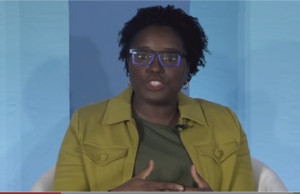
To do that, Hill’s is “standing up a lot of clean room partnerships to get at conversion,” explained Enoch. “You may be willing to accept lower efficiency … if you know it’s going to pay off in the long run. We are trying to figure out the balance.”
“There’s not a single source of truth across everything. So everyone finds the number that makes them look great. How do we bring all this together, asked Rinaldi. “We’re trying to structure our entire enterprise data ecosystem … to build capabilities that will answer any question the CFO has.”
Real-time analysis also needs to improve, speakers suggested. “Measurement should impact the next impression, not the next campaign,” said Dan Mouradian, VP of Global Client Solutions at Innovid. Insight after the fact “is ultimately a diminished asset.”
7. The store is past, present and future
Discussing the future of the physical store environment in a former mall was equal parts fitting and ironic. But the store’s legitimacy as an advertising medium — another “new” concept that’s been around for quite some time — is quite clear now, especially since it gives retail media networks their greatest opportunity to connect advertisers with shoppers in ways that other media operators can’t.
In fact, Insider Intelligence has found that the in-store audience of many retailers is 70% larger than the digital viewership they deliver, Principal Analyst Andrew Lipsman noted.

To build out the year-old Gulp Media Network, 7-Eleven will “go heavy into in-store marketing,” beginning with a unique AI-enabled audio advertising network, said Mario Mijares, the retailer’s VP of Insights, Loyalty, Marketing and Monetization Platforms (left).
However, Target is “not thinking of the store as the end of the journey” when planning its brick-and-mortar experience because shoppers (like the aforementioned ones checking their apps in-aisle) no longer view their trips like that, said George.
“You’ve got to be really thoughtful about the customer experience. You can’t get in the way of the transaction,” advised Marlow Nickell, CEO of the third-party Grocery TV in-store network.
“Grocery hasn’t changed much in 50, 60, 70 years. The experience has really stayed the same,” said David DeRobbio, Head of API & Independent Agency Partnerships at Instacart. But “through new ad experiences or technology … retailers can modernize the environment for consumers as they continue to change their shopping habits.”
“Not everything has to be digital to be good,” said Haussling at Colgate-Palmolive. “But for the generations coming up now, it might have to be.”
